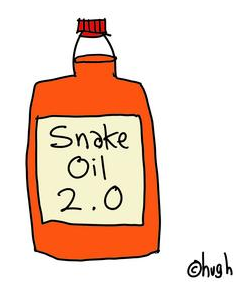 When I wrote a post earlier today suggesting that YouTube was not the first to use a Flash overlay advertisement for online video, I didn’t realize I’d be getting so many emails and comments disputing exactly who first invented the unit.
When I wrote a post earlier today suggesting that YouTube was not the first to use a Flash overlay advertisement for online video, I didn’t realize I’d be getting so many emails and comments disputing exactly who first invented the unit.
VideoEgg has certainly been doing this for a year or so. In a comment to that post, though, an (unconfirmed) ex-YouTuber says the idea was “discussed long ago inside the company” and follows up with:
All other video sharing websites that came out around the time YouTube emerged were still using Quicktime or Windows Media. YouTube might as well accuse VideoEgg of stealing the idea of using a Flash video player.
Next up was Adbrite founder Philip Kaplan, who emailed me to say that Adbrite has had their own overlay product for nearly a year. He also pointed out that I wrote about it. The ad unit is less sophisticated, but it is certainly a Flash video overlay ad unit.
And finally, Brightcove CEO Jeremy Allaire sent me a long email saying they’ve been doing this as far back as October 2005. He also says the ad units are not particularly popular with advertisers:
I caught your post on VideoEgg taking credit for video overlays as an ad format vis a vis the latest YouTube ad product introduction.
To reinforce this point, while I don’t want to claim “invention”, we were certainly very well ahead of the market when we introduced video overlay ads back in October of 2005, just as YouTube was getting their first pirated episodes of The Sopranos on their site. At the Web 2.0 conference that fall, Brightcove debuted our beta service and as part of that both demo’d and discussed how we wanted to changing video and television advertising with new formats that could engage the user in a non-intrusive manner while creating opt-in ‘takeover sponsorship’ units that a marketer would be excited about. We demo’d overlay ads from Coca Cola running in a MTV Networks channel that we were just launching with them. The New York Times covered this debut.
We subsequently demo’d and introduced these formats again at AdTech in New York that fall, and if you speak with any number of a major content owner brand partners, it has been part of our platform since then, along with a wide range of other innovations in video ad formats, policies and targetting mechanisms.
Interestingly, despite having been 18+ months “ahead of the market”, to our disappointment, there has been extremely limited uptake by the advertising community around these formats. There are a lot of factors behind this limited uptake, including:
– the advertising community buying video have been very focused on leveraging existing creative and buying patterns in the online video space
– most content publishers and media owners have been focused on getting the ‘basics’ up and running, and also responding to the RFPs from marketers and advertisers, which are almost 100% focused on basic short-form video commercials
– for premium brands and content, the basic pre-roll and companion banners are yielding extremely attractive CPMs and there is little evidence that :15 ads have any negative impact on end-user viewership behavior — in fact, our own metrics show that sites that run without any ads, and then introduce :15 pre-rolls and banners achieve identical usage and performance (e.g. no drop-off in users because of ads) on their content.Nonetheless, we remain very bullish about ‘composite’ video advertising formats that combine overlays and unique and non-intrusive calls to action with deeper interactive marketing experiences. We’ve been pushing this for years and only now are starting to see the publishers and media owners that we work with begin to take an interest in these formats. I believe this is because we’re now entering a phase where content companies are looking at ways to maximize yield and revenue within their content, and they are introducing more mid and long-form content which require, by economic necessity, a different suite of formats to deliver a good user experience.
So where does that leave us? Maybe none of these startups did – Om says it all goes back to old school television. We’ll see if VideoEgg’s patent filing is unique enough to be issued. But they’ve already said they won’t be using it offensively to stop others from doing this. The market will sort it all out.
cartoon credit: the amazing Hugh MacLeod